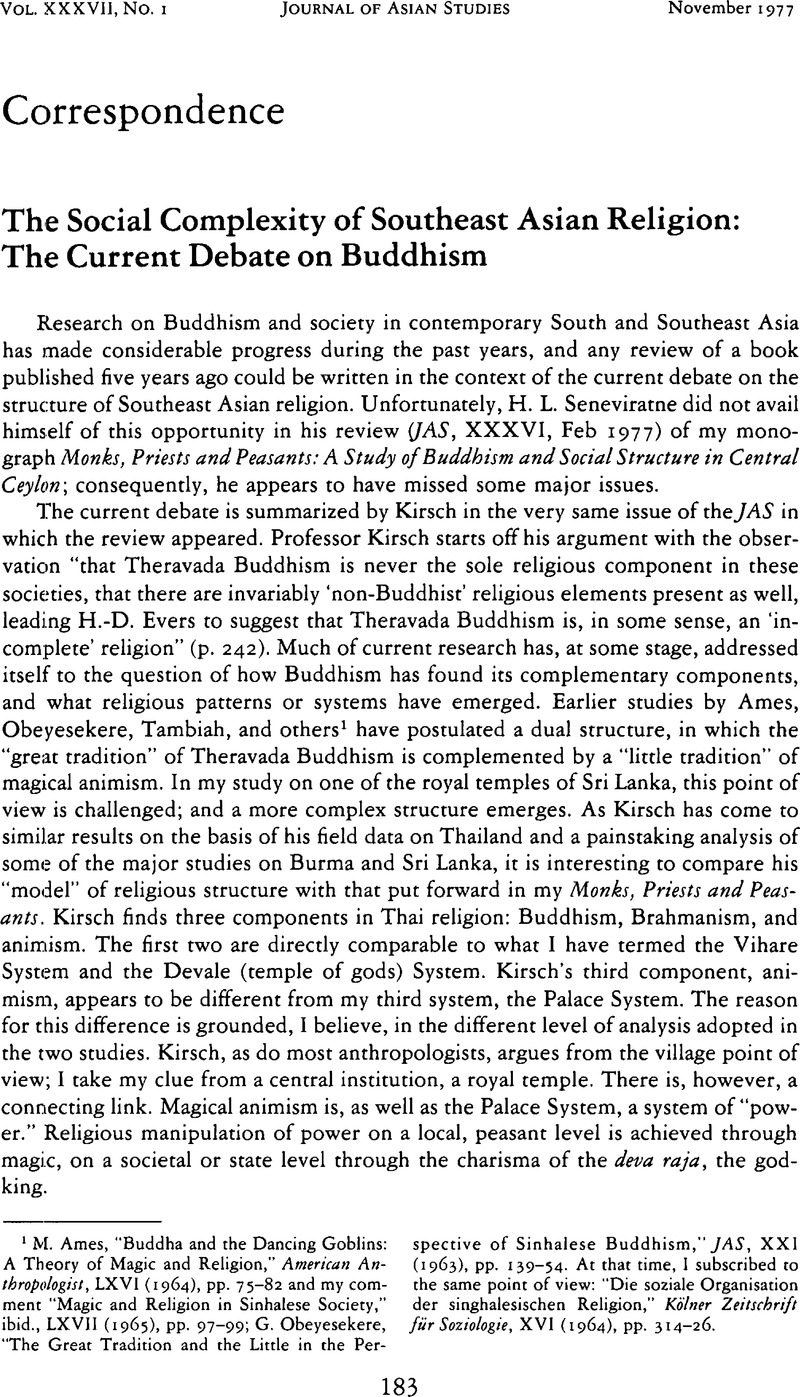Article contents
The Social Complexity of Southeast Asian Religion: The Current Debate on Buddhism
Published online by Cambridge University Press: 23 March 2011
Abstract

- Type
- Correspondence
- Information
- Copyright
- Copyright © Association for Asian Studies, Inc. 1977
References
1 Ames, M., “Buddha and the Dancing Goblins: A Theory of Magic and Religion,” American Anthropologist, LXVI (1964), pp. 75–82CrossRefGoogle Scholar and my comment “Magic and Religion in Sinhalese Society,” ibid., LXVII (1965), pp. 97–99; Obeyesekere, G., “The Great Tradition and the Little in the Perspective of Sinhalese Buddhism,” JAS, XXI (1963), pp. 139–54.CrossRefGoogle Scholar At that time, I subscribed to the same point of view: “Die soziale Organisation der singhalesischen Religion,” Köner Zeitschrift für Soziologie, XVI (1964), pp. 314–26.Google Scholar
2 Norman, K. R., Review of Monks, Priests and Peasants in Journal of Modern Asian Studies, X (1976), pp. 466–69.CrossRefGoogle Scholar
3 Wee, Vivienne, “‘Buddhism’ in Singapore” in Hassan, Riaz (ed.), Singapore: Society in in Transition (Kuala Lumpur: Oxford Univ. Press, 1976), pp. 155–88.Google Scholar The only “sects” of some importance in modern Theravada Buddhism appear to have been millenarian movements, which, as Charles Keyes has pointed out, were “transitory” phenomena, expressing a “profound social crisis” (“Millennialism, Theravada Buddhism, and Thai Society,” JAS, XXXVI [1977], p. 302). Neither these movements nor the temporary increase of “Brahmanism” has led to the formation of persistent sects.
- 2
- Cited by




